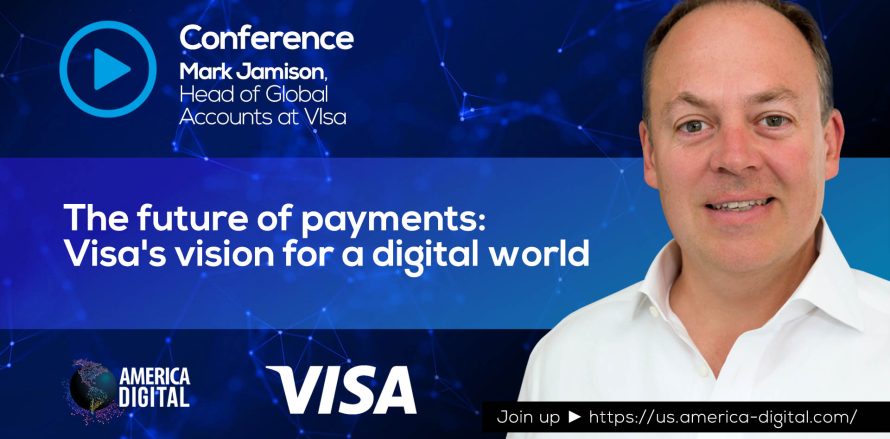The future of payments and retail is undergoing a profound digital transformation, where the way we pay for goods and services is becoming seamless and integrated into our daily lives. Payment cards are giving way to all-digital transactions, much like the Uber experience, where you never have to pull out a physical card.
With more than 3.3 billion Visa cards in circulation, it is clear that Visa has a significant share in the global payments space. As Mark Jamison, Head of Global Accounts at Visa, points out, “there are more than 3.3 billion Visa cards and, by the way, there are less than eight billion people in the world, so approximately half of the people in the world have one.”
The central theme of Jamison’s presentation revolves around the dramatic transformation of payment methods. He forecasted the decline of plastic cards, stating that, “the plastic card that you know and love will go away.” Instead, payments are rapidly becoming embedded into every facet of daily life.
Payments are also becoming highly personalized and engaging, with loyalty programs, gamification, and tailored offers becoming the norm. Consumers will soon have unprecedented control over how they pay, allowing for flexibility and convenience.
Retail is also evolving rapidly, with physical locations transforming into interactive spaces that blur the lines between online, mobile, and in-person shopping. Staff roles are changing, from product pushers to knowledgeable guides who offer curated experiences.
Innovative shopping experiences, real-time reviews, and beacon technology are enhancing the way consumers interact with products and brands, Jamison says.
Behind these changes, technology plays a pivotal role, with rich data sets, millennial-driven innovation, big technology platforms, enhanced security, and voice-activated AI shaping the future of commerce. Overall, the future of commerce promises invisible payments, personalized experiences, and robust security, ensuring an exciting and convenient journey for consumers.
In an engaging video demonstration, the fintech expert showcased an array of devices seamlessly executing payments. From cars to smartphones and even virtual reality environments, the need for physical cards is fading. This transformation is more than just a technological shift; it’s a fundamental change in how consumers experience payments.
Consumer empowerment
Jamison elaborated on three monumental shifts that consumers can expect. First, he emphasized that “payments will be all digital.” Drawing parallels to Uber’s effortless payment process, he described a world where transactions seamlessly occur without the need to reach for a card.
Second, he highlighted the personalization of payment experiences. Loyalty programs, offers, and even gamification will make payments more engaging and tailored to individual preferences. In China, for instance, shopping can reward you with digital chickens or even real trees planted in your name.
The third significant trend is consumer empowerment. Jamison envisioned a future where consumers exercise complete control over their payment methods. Flexibility in payment options, such as switching to installment plans post-purchase, will become the norm.
The retail of the future
Retail, too, is undergoing a profound transformation. Jamison described five key trends. Transactions will occur everywhere, from physical locations to digital realms. The concept of distinct sales channels is dissipating; instead, a unified consumer journey is emerging. Staff roles in retail environments are evolving, moving from traditional sales to enhanced customer interactions. Finally, the way people experience products and services is changing, with immersive in-store experiences taking center stage.
The integration of technology into the retail landscape is evident. For instance, invites customers to experience their speakers in different home environments. Kellogg’s has ventured into the retail realm, allowing customers to try before they buy. Even Amazon, with its acquisition of Whole Foods, is blurring the lines between online and offline retail.
Jamison emphasized that all these innovations rely on rich data sets, are designed by millennials, and leverage big technology platforms. Security, he asserted, will be paramount, with biometric technology playing a pivotal role in ensuring trust in digital transactions.
Intriguingly, the adoption of voice AI is gaining momentum. Jamison underscored how voice interfaces simplify complex interactions, making technology more accessible. He noted that “voice will be the next gateway to the internet.” This shift is particularly pronounced among retirees, bridging the generational gap.
In summary, Mark Jamison’s visionary presentation paints a picture of a digital payment landscape that is more seamless, personalized, and secure than ever before. It’s a future where plastic cards are relegated to history, and payments are integrated into the fabric of everyday life. As consumers, you can expect greater control and choice in how you pay, with technology serving as both a guardian and an enabler of this brave new world.
☑ Engage in thought-provoking discussions with industry experts, explore cutting-edge solutions from global tech giants, and forge strategic partnerships that will shape the future of your organization.
👉 Visit www.us.america-digital.com to discover the comprehensive event agenda and the myriad benefits awaiting you.
Take the first step by scheduling a 30-minute online meeting with our management team to secure your place and receive personalized guidance. Together, let’s embark on a transformative journey at America Digital Miami 2023!”
 Contact
Contact 





